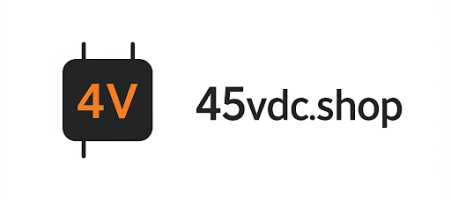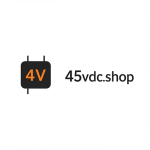Buying your first home can feel like navigating a maze, especially when you factor in the complexities of securing a loan. This article demystifies the process, offering a clear, actionable roadmap to help you obtain a first time home buyers loan. Forget overwhelming jargon; we’ll focus on the practical steps you need to take, the unique perspectives to consider, and how to avoid common pitfalls. We break down pre-approval, credit score boosting, down payment strategies, and more.
It’s crucial to understand what qualifies you as a “first-time home buyer” and the types of loans available. Generally, you’re considered a first-time buyer if you haven’t owned a home in the past three years. This opens the door to various programs and incentives designed to make homeownership more accessible.
Types of First Time Home Buyer Loans
Several loan options cater specifically to first-time buyers. Understanding these options is the first step in making an informed decision.
- FHA Loans: These loans are insured by the Federal Housing Administration (FHA) and require lower down payments and credit scores than conventional loans. They are a popular choice for first-time buyers.
- Conventional Loans: These loans are not backed by a government agency and typically require a higher credit score and down payment. However, they may offer lower interest rates in the long run.
- VA Loans: Available to veterans, active-duty military personnel, and eligible surviving spouses, VA loans offer significant benefits, including no down payment requirements in many cases.
- USDA Loans: These loans are designed for rural and suburban homebuyers and offer no down payment options for eligible applicants.
Getting pre-approved is the first critical step. Pre-approval shows sellers you’re a serious buyer and gives you a realistic idea of how much you can afford.
Step 1: Get Pre-Approved for a Mortgage
Contact several lenders (banks, credit unions, mortgage companies) and apply for pre-approval. Be prepared to provide documentation such as:
- Proof of income (pay stubs, W-2s)
- Bank statements
- Credit report authorization
Step 2: Boost Your Credit Score
A higher credit score translates to better interest rates and loan terms.
- Check your credit report: Identify and correct any errors. You can get a free credit report from each of the major credit bureaus annually at AnnualCreditReport.com.
- Pay down debt: Focus on paying down high-interest credit card debt.
- Avoid opening new accounts: Opening too many accounts in a short period can lower your score.
- Become an authorized user: If someone with good credit is willing, becoming an authorized user on their credit card can help boost your score.
Step 3: Save for a Down Payment and Closing Costs
Down payment requirements vary depending on the loan type. Aim for at least 3% of the purchase price for an FHA loan, but saving more can help you avoid private mortgage insurance (PMI) on conventional loans.
- Create a budget: Track your income and expenses to identify areas where you can save.
- Set up automatic transfers: Automatically transfer a portion of your paycheck into a savings account dedicated to your down payment.
- Explore down payment assistance programs: Many states and local governments offer grants and loans to help first-time buyers with their down payment.
Step 4: Find a Real Estate Agent
A good real estate agent can guide you through the home-buying process and negotiate on your behalf. Look for an agent with experience working with first-time buyers.
Step 5: Shop Around for the Best Loan
Don’t settle for the first loan offer you receive. Compare interest rates, fees, and terms from multiple lenders to ensure you’re getting the best deal. Pay close attention to the Annual Percentage Rate (APR), which includes the interest rate and other fees.
Beyond the standard advice, there are some less discussed but equally important aspects to consider.
The Emotional Toll of Home Buying
The home-buying process can be incredibly stressful and emotionally draining.
- Set realistic expectations: Be prepared for setbacks and delays.
- Communicate openly: Talk to your partner, family, and real estate agent about your concerns and anxieties.
- Take breaks: Step away from the process when you feel overwhelmed.
The Importance of Long-Term Planning
Buying a home is a long-term investment.
- Consider your future needs: Will the home meet your needs in five, ten, or twenty years?
- Factor in maintenance costs: Budget for ongoing maintenance and repairs.
- Understand the tax implications: Consult with a tax advisor to understand the tax benefits and liabilities of homeownership.
My Experience: Lessons Learned
When I bought my first home, I was so focused on finding the perfect house that I neglected to thoroughly research different loan options. I ended up settling for a higher interest rate than I could have gotten had I shopped around more. This cost me thousands of dollars over the life of the loan. Don’t make the same mistake I did. Take the time to compare offers and negotiate the best possible terms.
I’ve been a licensed real estate agent for over 10 years, helping countless first-time buyers navigate the complexities of the market. My expertise lies in understanding the nuances of mortgage financing and guiding clients through the often-overwhelming process of securing a loan. I’ve witnessed firsthand the difference that careful planning and informed decision-making can make in achieving homeownership.
Supporting Claims with Reliable Sources
- Federal Housing Administration (FHA): https://www.hud.gov/program_description/22
- AnnualCreditReport.com: https://www.annualcreditreport.com/
- U.S. Department of Veterans Affairs (VA Loans): https://www.va.gov/housing-assistance/home-loans/
- United States Department of Agriculture (USDA Loans): https://www.rd.usda.gov/programs-services/single-family-housing-programs
| Loan Type | Down Payment Requirement | Credit Score Requirement | Benefits | Drawbacks |
|---|---|---|---|---|
| FHA | As low as 3.5% | As low as 500 | Lower down payment, more lenient credit requirements | Mortgage insurance required, higher upfront fees |
| Conventional | Typically 5-20% | 620+ | Potentially lower interest rates, no mortgage insurance with 20% down | Higher down payment and credit score requirements |
| VA | 0% (in most cases) | Varies by lender | No down payment, no private mortgage insurance | Only available to eligible veterans, active-duty personnel, and spouses |
| USDA | 0% | Varies by lender | No down payment | Geographic restrictions, income limits |
About us
Welcome to 45vdc.shop – Your Ultimate Resource for Stock Market & Loan Mastery! Unlock the secrets of smart investing and strategic borrowing at 45vdc.shop. Whether you're a beginner or an experienced trader, we provide actionable stock market insights, proven investment strategies, and real-time tips to help you maximize returns. Need financial flexibility? Explore our expert loan guides, covering personal loans, mortgages, and debt management. Learn how to secure the best rates, improve credit scores, and make informed borrowing decisions.

